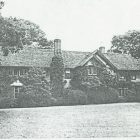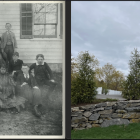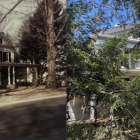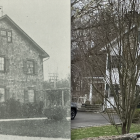Homepage Featured
New Canaan Now & Then: ‘Gitanjali’
|
‘New Canaan Now & Then’ is sponsored by Brown Harris Stevens Realtors Joanne Santulli, Karen Ceraso, Bettina Hegel and Schuyler Morris. “Gitanjali”, a poem by Nobel Prize winner Rabindranath Tajore, is the name given to the historic Tudor home at 298 Country Club Road.
The poem’s title roughly translates to an “offering of song” and it appears that the house’s long history has been a muse for its inhabitants.
The land records list the building date as 1917 but two different sources record the date as earlier (New England Home Magazine article dated April 13, 2010 lists the date as 1870 and the “Secret Garden Tour” of 2002 lists the date as 1890s).
The 5,000-square-foot home, which was originally the guest house or coach house for a long demolished estate home, includes a potting shed, a stone gardener’s cottage, a pool house and swimming pool, two greenhouses, and a teahouse in its current inception. Incredibly, most of these structures are original to the property. (According to town permits in 1966 and 2004, the greenhouses were added.)
The property is referred to as “Rat Tuttle’s Hill” in an Advertiser article from 1964. That same article explains that Country Club Road was laid out in 1761 (almost two centuries before the country club was erected).




